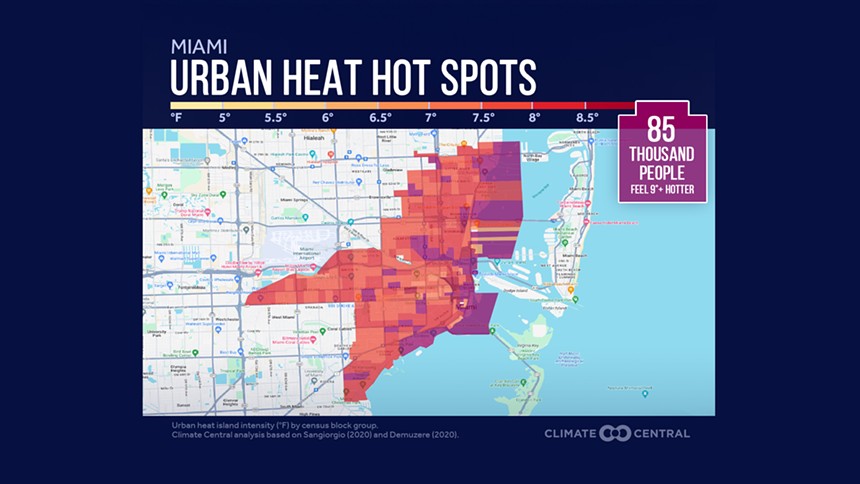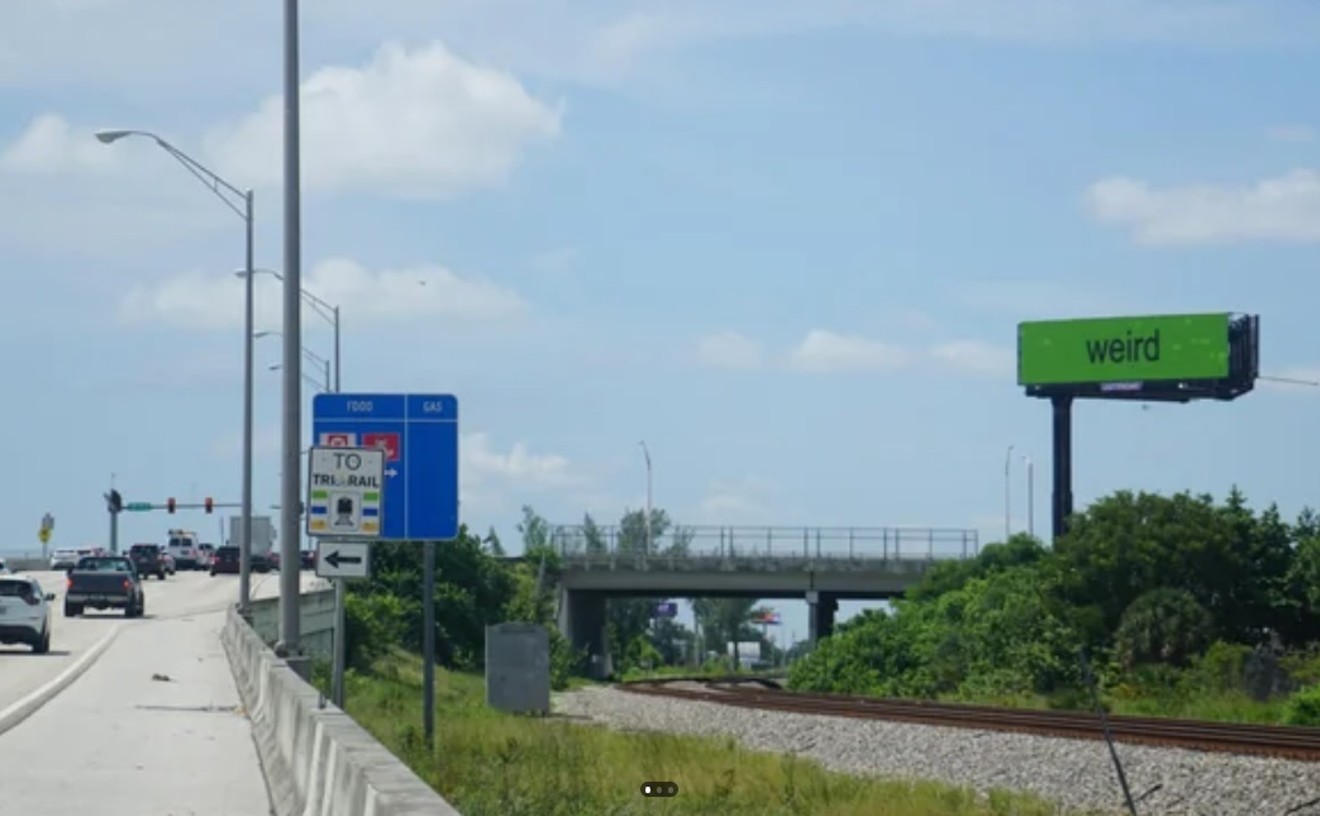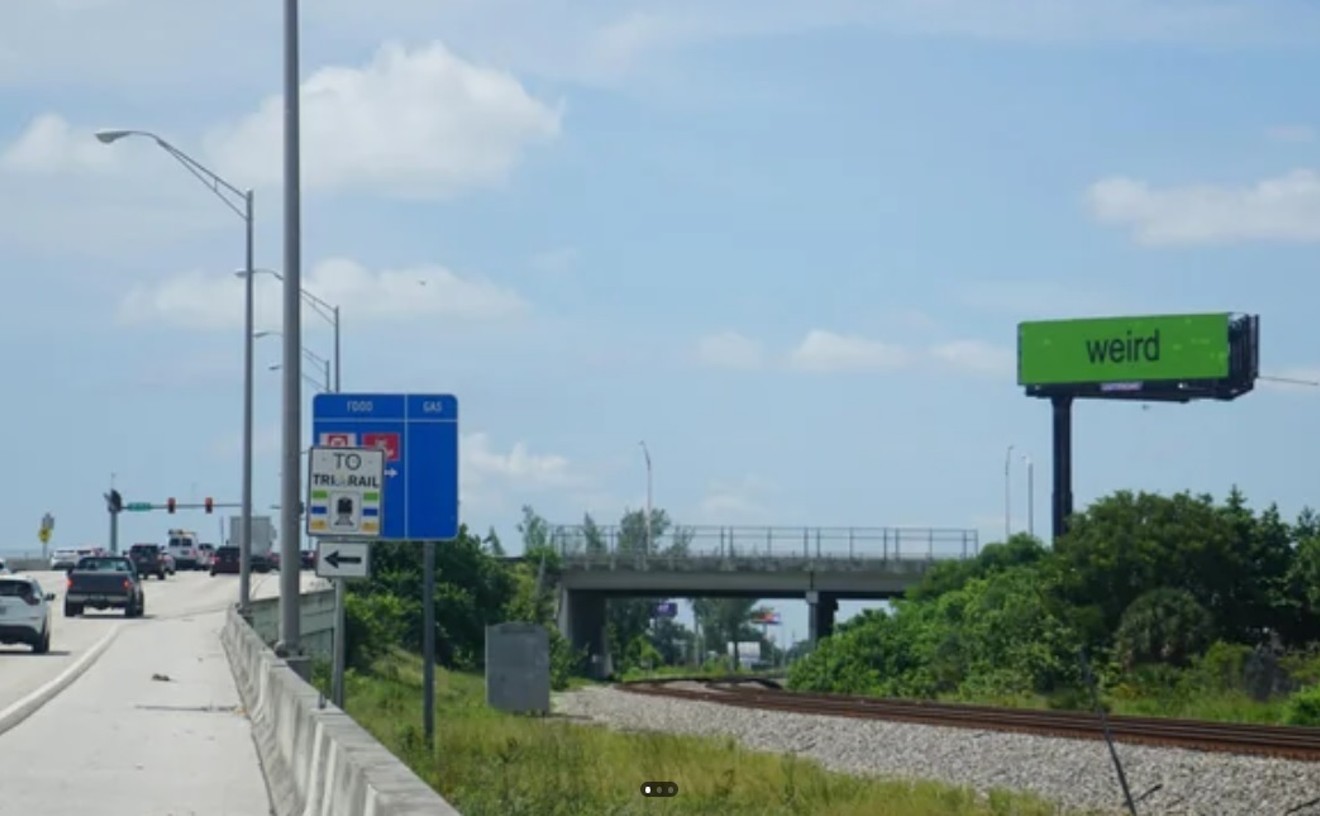Still, Climate Central, a nonprofit group that researches and reports on Earth's changing climate and how it affects our lives, would like a word.
Scientists at Climate Central developed a measurement called the Urban Heat Island (UHI) index, which expresses in degrees Fahrenheit the extent to which the built environment — from population density to urban infrastructure to vehicle traffic, tree cover, and concrete surfaces — increases ambient temperatures. Then, they used data from the 2020 U.S. Census to apply the index to 65 cities nationwide, including Miami.
"We're looking at, basically, the additional heat," explains Jennifer Brady, a senior data analyst and research manager for the climate-focused nonprofit. "Say you were just standing in a spot and took away the pavement, roads, and traffic: How much cooler would it be there?"
Having crunched data from the 332 census block groups that comprise the City of Miami, Climate Central pegged Miami's average UHI at 8.38 degrees. That's the ninth-highest average UHI index of the 65 cities that were studied. (New York City topped the list at 9.65 degrees, with San Francisco, Newark, Chicago, and Philadelphia rounding out the top five.) West Palm Beach slotted in two spots higher than Miami, at 8.47 degrees.
Brady notes that "Miami has pretty high temperatures to begin with, so the additional heat on top is going to make it even hotter. Whereas in New York, you may have more areas that are 11 degrees hotter, but maybe these temperatures are lower." Moreover, the UHA index doesn't factor in humidity.
Climate Central estimated that 85,000 of Miami's 450,000 residents — nearly 20 percent — experience temperatures at least nine degrees higher than inhabitants of less-urban areas. Parts of the Silver Bluff Estates neighborhood off Coral Way experience an air-temperature increase of 13 degrees on the high end, while other areas feel only a 6.8-degree bump.
The highest concentrations of census blocks with a UHI index of ten degrees or higher were found in:
- downtown Miami
- Brickell
- the Upper Eastside
- Coconut Grove
- Liberty City

Take a look at the graphic to see how your neighborhood's built environment adds additional heat to the air temperature.
Graphic by Climate Central
Cooling Breezes Don't Cool Us All
It would seem to stand to reason that onshore breezes provide heat relief. So how to explain the fact that areas like downtown, Brickell, Edgewater, and Miami's Upper Eastside experience some of the largest temperature increases?Blame density, heat-absorbing materials, and traffic, Brady says. For example, Brickell's 36 census blocks average out to a sweaty 9.89 degrees above Miami's day-to-day swelter.
"People assume that over by the water, it's going to be cooler," she elaborates. "You don't think of that fact that, yeah, if you are standing by the ocean and you're getting that wonderful ocean breeze, it's cooler — but if you go three blocks in and there's a bunch of buildings blocking that breeze and traffic running by and air conditioners in windows letting off waste heat, that ocean breeze isn't as valuable anymore."
That also helps explain why neighborhoods located away from the city center can also be heat islands. Take Coconut Grove, where some areas were found to be barely shy of 12 degrees hotter than the ambient temperature would indicate.
Is There a Cure for the UHI Effect?
The staff at Climate Central believe the Urban Heat Island (UHI) index can do more than make residents feel even hotter under the collar. It can also guide elected officials and community organizations toward ways to mitigate the nation's worsening heat crisis, such as equipping public benches with umbrellas for shade, constructing cooling centers for those without access to air conditioning, painting roads with light colors that are more reflective than black asphalt, and transforming disused parking lots into public gardens."If you have miles and miles of parking lots and roads, it's not going to be cooler just because it's outside the city," Brady explains. "That's a big concern to a lot of cities that are seeing growth outside the city center. Are they seeing growth that is balanced and making sure, 'It could get hot here too — let's make sure some trees stick around'?"
"We're not going to tear down buildings, but we have to think of the solutions and what might fit in a certain place," she adds. "I've visited some of these [cities], and it's really cool what people are doing. A lot is just community organizations and neighborhoods saying, 'We've got to make our surroundings more comfortable.'"
It's crucial, Brady says, for people to understand why cities are hotter.
"We're hoping that the 'why' can lead you more quickly to 'how can I make this better?'" she explains. "We're talking about the safety of people. Heat is extremely dangerous. It's a huge killer — the biggest killer of all weather phenomena."













